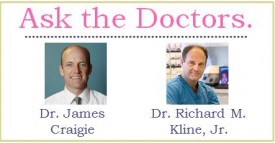 While healthcare agencies and government entities may disagree about when to start having mammograms and how frequently to schedule them, one thing is clear: mammograms are the best way to screen for early breast cancer. You don’t want to neglect your mammogram, and here are a few reasons why.
While healthcare agencies and government entities may disagree about when to start having mammograms and how frequently to schedule them, one thing is clear: mammograms are the best way to screen for early breast cancer. You don’t want to neglect your mammogram, and here are a few reasons why.
You’ll have peace of mind.
When you’ve had a mammogram, you know you’re doing all you can to detect breast cancer early and get it treated. You won’t have that nagging question in your head about whether your monthly self-checks are doing the job.
Mammograms are the best way to protect yourself.
Regular mammograms are your best defense against cancer, and if you do have it at some point, you can treat it as early as possible. According to the National Cancer Institute, when breast cancer is detected early, the five-year survival rate is 98%. Mammograms can detect breast cancer years before you can feel the lump, so it’s the best early-detection instrument available.
Insurance covers it.
Most insurance covers mammograms for women over 40 or younger women who have high risk for breast cancer. If you have first-degree relatives (mother or sister) who had breast cancer at a young age, start having mammograms a decade earlier than the youngest age of diagnosis. For example, if your sister was diagnosed at 42, start having mammograms at 32.
It only takes a few moments.
Yes, the machine will press on your breasts, and yes, it can be uncomfortable. But it only takes a few moments, and then you’re good to go for a year. To reduce discomfort, try not to schedule the mammogram near your period if you tend to have tender breasts at that time.
If you’re over 40 and haven’t had a baseline mammogram, or you haven’t had one in a few years, it’s time to schedule one. Call your doctor today.








